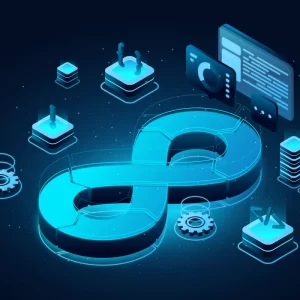Descripción del curso
Scrum is a framework within which people can address complex adaptive problems, while productively and creatively delivering products of the highest possible value.
Scrum is a process framework for developing, delivering, and sustaining complex products that has been used to manage work on complex products since the early 1990s. Scrum is not a process, technique, or definitive method. Rather, it is a framework within which you can employ various processes and techniques. Scrum makes clear the relative efficacy of your product management and work techniques so that you can continuously improve the product, the team, and the working environment. The role of Scrum Master is crucial to ensuring a proper Scrum process is maintained throughout a project.
It’s in this continuously evolving context, that PeopleCert designed a suite of Scrum Master qualifications that reflects the market need to close the skills-gap that many organizations are facing and support the realization of their business objectives and to improve communication, standardization, collaboration and automation for the delivery of quality software products better, faster and with a lower cost.
Purpose of the SCRUM Master II Qualification
The purpose of this qualification level is to confirm that a candidate has sufficient knowledge, understanding and application of the Scrum framework and be able to work effectively with, or as a leading member of, a Scrum Team, analyzing and applying these skills and knowledge. The PeopleCert SCRUM Master I certification is highly recommended for the PeopleCert SCRUM Master II certification.
Público objetivo
This certification is the second level of the PeopleCert SCRUM qualification scheme and is aimed at anyone who wishes to become an efficient leading member in an environment that the Scrum framework is applied and requires candidates to have and demonstrate a solid knowledge and understanding of Scrum terms, principles, tools and practices, as well as demonstrate their application skills of how to use tools efficiently and effectively. The certification can also cater for candidates seeking personal certification
This certification will provide the advanced level of knowledge to its holders and will certify that they have a solid understanding of the Scrum framework practices using various tools and are able to apply these in everyday work involving the required practices. The basic level of skills and knowledge is covered in the PeopleCert SCRUM Master I level of the qualification scheme provided by PeopleCert and a quick recap of these is provided in the PeopleCert SCRUM Master II material.
Learning Objectives
At this qualification level, candidates will be introduced to concepts, terms, principles and tools used in the Scrum framework and gain a deep understanding of Scrum best practices as well as a level of expertise that goes beyond a typical team leader or project manager through a unique combination of case studies, storytelling, and practical learning based on the real-life challenges that Scrum Masters face.
Holders of the PeopleCert SCRUM Master II certification, will be able to demonstrate their knowledge, understanding and practical application of:
- The true extent of what it means to think and act in an Agile way
- The mastery of the Scrum framework centered around the integration of roles, events, and Scrum artifacts, including and supporting the product backlog and sprint backlog
- The many soft skills necessary for the Scrum Master, such as servant leadership, facilitation, coaching and mentoring, problem solving, and removing impediments
- The Day-to-Day Work of the Scrum Master in a Sprint
- The most common frameworks for scaling Scrum projects with multiple teams and complex products
Qualification Scheme Level
Through the above learning objectives, candidates will demonstrate relevant knowledge skills in the following areas:
- Introduction to Agile and Scrum
- The Scrum Master Role
- The Day-to-Day Work of the Scrum Master in a Sprint
- An Introduction to Scaling Scrum
Examination
The PeopleCert SCRUM Master II certification exam is designed to validate a candidate’s knowledge, and understanding, of the Scrum practices, as detailed above as well as how to be able to apply and analyze this knowledge in real situations faced by a Scrum Master
The SCRUM Master II exam focuses on the following four (4) categories in the cognitive domain of Bloom’s taxonomy1 which is a reference for different levels of learning:
- Knowledge
- Comprehension
- Application
- Analysis
Assessment Approach
The assessment approach used for the PeopleCert SCRUM Master II certification focuses on the four basic categories of Knowledge, Comprehension, Application and Analysis.
Knowledge is defined as recalling previously learned material, from facts to theories and represents the lowest level of learning outcomes in the cognitive domain. Such learning outcomes are turned in assessment objectives that include knowing and recalling such as:
- Common and/or basic terms, definitions, concepts and principles
- Specific processes
- Processes, procedures and project management methods
Comprehension is the lowest level of understanding and entails the ability to grasp the meaning of the material taught, including some elements of interpretation, translation or estimation during the process. Such learning
outcomes and in turn assessment objectives go beyond simply recalling information and may include:
- Understanding facts, concepts and principles
- Interpreting material (i.e. code, charts, graphs, text, diagrams)
- Justifying a process, procedure and method used
Application is a level where candidates need to combine their knowledge and understanding/comprehension on a subject and be able to create an abstraction. More specifically, candidates are expected to apply their knowledge and understanding so that abstractions, general principles, or methods to specific concrete situations are made. Such learning outcomes and in turn assessment objectives go beyond simply recalling information and may include:
- Use ideas, principles and theories in new, specific and concrete situations
- Being able to choose appropriate methods and tools, apply principles, use a specific approach or identify the selection of options at a given situation
- Apply what is learnt into a new situation
- Apply rules, methods, concepts, principles, and theories
- Learning outcomes in this area require a higher level of understanding than those under comprehension
Analysis is the level that goes beyond application as the candidates need to be able to break down information into its component parts so that its organizational structure may be understood and to make inferences. More specifically, candidates need to break down, discriminate, diagram, detect, differentiate and illustrate which are all important tasks at this level of learning and include the previous levels of knowing, comprehending and applying. Such learning outcomes and in turn assessment objectives go beyond knowing, understanding and applying and may include:
- see patterns that they can use to analyze a problem
- develop divergent conclusions by identifying motives or causes
- make inferences
- find evidence to support generalizations
- identify parts, analyze the relationship between parts, and recognize the organizational principles involved
The assessment incorporates the above learning outcomes as it uses assessment objectives that cater for the above cognitive domain categories.
Detailed Syllabus
The syllabus is structured into sections relating to the major subject headings and numbered with a single digit section number. The recommended training hours, per Syllabus Category are also provided in this table. A total of fourteen to sixteen (14-16) hours of accredited training is recommended
Introduction to Agile and Scrum
What Is Agile?
- Define the term “Agile” as an approach for managing product development (including product value)
- Identify the four values of the Agile Manifesto.
- Identify the twelve principles of the Agile Manifesto
- Discuss the need to ‘do’ and ‘be’ Agile in order to fully reap its benefits.
- Describe evidence of a successful Agile transformation
What is Scrum?
- Describe Scrum as one of many Agile approaches.
- Explain the term ‘Scrum’ and why it is used.
- Explain the elements of the Scrum framework
- Describe empiricism and lean thinking of Scrum theory (including divergent and convergent thinking).
- Recall the three pillars of scrum.
- Identify the five core Scrum values
- Recall the members of a Scrum team and know the difference between a team and a working group
- Explain the concepts of cross-functionality and self-managing and what challenges these structures may raise for middle management
- Describe the accountabilities of the Scrum team members.
The Scrum Master Role
Core Competencies for a Scrum Master
- Discuss the fundamental competencies required of a Scrum Master.
- Explain the need for a Scrum Master to be the Agile and Scrum Expert.
- Explain why a Scrum Master needs to be knowledgeable in other practices.
- Describe how a Scrum Master teaches others about Scrum
- Explain the three coaching responsibilities of Scrum Master coaches
- Describe the coaching skills required of a Scrum Master
- Discuss the steps in the PLEASE coaching model
- Explain the methods a Scrum Master uses to be a successful facilitator
- Describe the skills of the Scrum Master when facilitating Scrum events
- Describe the three levels of listening and the benefits of reaching the second and third levels
- Explain the key aspects of effective communication for senders and recipients
- Explain how to increase the effectiveness of team communication
- Discuss problem solving skills and strategies
- Describe the ways a Scrum Master can assist with conflict resolution.
- Explain the Scrum Master’s role in helping individuals transition to a new way of working including moving through Bridges Transition Model.
The Scrum Master as a Leader
- Describe leadership qualities
- Explain the meaning of servant leadership
- Describe the relationship of the core values to the Scrum Master’s servant leadership role.
Serving the Scrum Team
- Describe the Scrum Master’s service to the Scrum team.
- Explain what a Scrum Master needs to do in each of the stages of Tuckman’s model for team development.
- Describe how a Scrum Master helps the Scrum team adapt to self-management.
- Explain the requirements for self-managing teams.
- Explain the signs of self-management
- Describe the common misperceptions of selfmanaging teams
- Explain the topics and guidance for coaching the Scrum team
- Describe types of interference and how the Scrum Master shields the team
- Explain the meaning of impediments
- Describe tactics for removing impediments
Serving the Product Owner
- Identify the ways a Scrum Master serves the
Product Owner.
- Recall the definitions for product and product goal
- Recall the description and purpose of the product backlog.
- List the attributes of product backlog items
Serving the Organization
- Describe the Scrum Master’s service to the organization
- Explain the Scrum Master’s role as the Scrum framework authority
- Describe how the Scrum Master acts as a change agent in an Agile/Scrum transition
What the Scrum Master Doesn’t Do
- Recall the behaviours Scrum Masters need to avoid
The Day-to-Day Work of the Scrum Master in a Sprint
Preparing for the Sprint
- Describe product backlog refinement
- Explain the sizing techniques of ‘ideal hours’ and ‘story points’
- Describe the Planning Poker® approach to sizing product backlog items
- Explain the use of sizes and triangulation for sizing product backlog items.
The Sprint: Basic Rules
- Explain the basic rules of Scrum as described in The Scrum Guide
- Describe the ‘definition of done’ and its use
- Explain the different time-boxed events in a sprint including their maximum timeframes.
The Sprint: Sprint Planning
- Recall the participants and three topics addressed during sprint planning.
- Describe the first topic of a sprint planning event including the participants
- Describe the second topic of a sprint planning event including participants, activities, inputs, and outputs
- Explain the sprint backlog, its contents, and the sprint goal
- Describe the third topic of a sprint planning event including participants, activities, inputs, and outputs
- Explain the Scrum board, its contents, and use
The Sprint: Sprint Execution
- Describe the participants in and the purpose of sprint execution.
- Describe the Developers’ co-located workspace
- Describe the daily Scrum including its purpose, participants, rules, and activities.
- Explain four possible questions asked during the daily Scrum
- Describe the Developers’ use of the Scrum board
- Explain the sprint burn-down chart
- Interpret the data displayed on a bar-style burndown chart
- Explain the concepts of the increment and incomplete work.
The Sprint: Sprint Review
- Describe the participants in and the purpose of the sprint review
- Describe how the sprint review is carried out, including the roles of the Product Owner, Developers, and key stakeholders
- Explain the tips for conducting, and the benefits of, the sprint review
- Describe Release Planning
The Sprint: Sprint Retrospective
- Describe the sprint retrospective including its participants, purpose and timing
- Explain what happens during the sprint retrospective
- Explain the concept of improvement stories
- Explain the concept of the improvement board
An Introduction to Scaling Scrum
Scrum@Scale
- Recall the definition of the Scrum@Scale framework and understand why an organization may not choose to scale
- Recall the two basic cycles of the Scrum@Scale framework and the points at which they intersect.
- Recall the composition of the Scrum@Scale teams
- Recall the scaled events that are part of Scrum@Scale
Scaling Scrum with Nexus
- Recall the definition of the Nexus framework
- Recall the composition of the Nexus teams
- Recall the scaled events that are part of the Nexus framework
Scaled Agile Framework (SAFe)
- Recall the definition of the Scaled Agile Framework (SAFe)
- Recall the composition of the Scaled Agile Framework (SAFe) teams
- Recall the seven core competencies Scaled Agile Framework (SAFe)
Inclusiones
Con CCS Learning Academy, recibirás:
- 2 day Certified Instructor-led training
- Manual del Estudiante del Seminario Oficial de Capacitación
- Colaboración con compañeros de clase (actualmente no disponible para cursos a su propio ritmo)
- Escenarios y actividades de aprendizaje del mundo real.
- Exam Voucher with Remote proctoring
*Para más detalles envíanos un WhatsApp o un correo electrónico: +(506) 8584-4013 o latam@ccslearningacademy.com.






